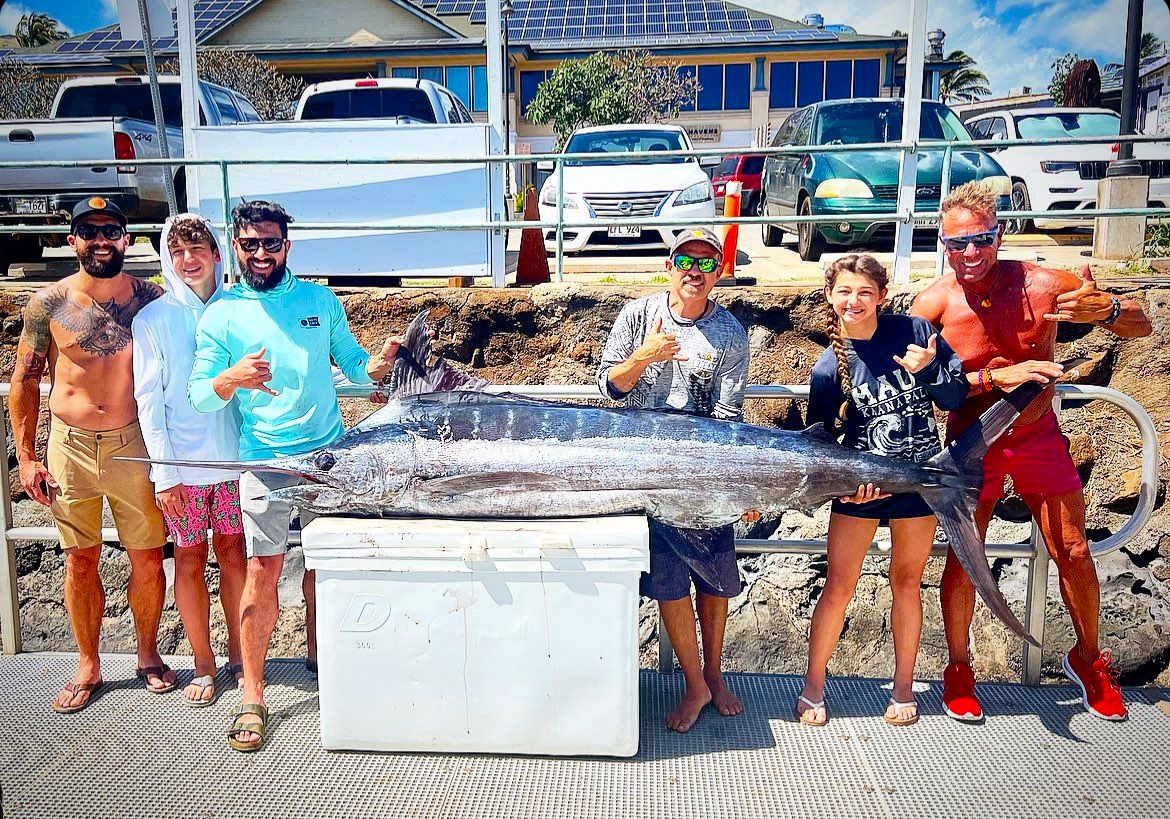So, you’re planning a fishing trip in Hawaii, huh? Well, there’s something you need to get familiar with before you even think about casting a line: Hawaii fishing rules. Yep, there’s more to this than just tossing out a baited hook and hoping for the best. The island’s waters are loaded with amazing fish, but it’s crucial that you follow the regulations to help keep these ecosystems thriving—and to avoid any hefty fines. Let’s dive in (pun fully intended).
Bonus Pro Tip before we get started: Booking with Steady Pressure Sportfishing means you don’t have to worry about a thang, we handle everything for ya.
Why Are Hawaii Fishing Rules So Important?
Overfishing and environmental threats are real, and no one wants to be the person responsible for tipping the balance. Following the rules means keeping Hawaii’s marine ecosystems healthy and sustainable for everyone.
Do You Need a Fishing License in Hawaii?
The short answer? Maybe. It depends on where you’re fishing and what you’re fishing for. Here’s the breakdown:
- Shoreline fishing (from land or shore): No license needed.
- Freshwater fishing: You will need a license if you’re going to be casting in any of Hawaii’s freshwater spots (we see you, bass anglers).
- Saltwater boat fishing: Good news—you won’t need a fishing license for recreational saltwater fishing from a boat.
Catch Limits in Hawaii: How Many Fish Can You Reel In?
Let’s talk about catch limits—because, yes, there are limits.
- Mahi-Mahi: There isn’t a strict limit on mahi-mahi for recreational fishing, but it’s generally accepted to keep things sustainable—don’t take more than you can use. Plus, leaving some mahi for the next person is the kind of ocean karma we love.
- Ahi (Yellowfin Tuna): Yellowfin tuna can be caught in Hawaii, but the size and catch limits can fluctuate depending on the season. Always double-check the latest updates before heading out. You don’t want to be the person who brings in an undersized catch and gets hit with a fine.
- Papio/Ulua (Giant Trevally): These beauties have a bag limit—two fish per day, and each has to be at least 10 inches long. Trust me, if you land an ulua, that two-fish limit is going to feel plenty satisfying.
Keep in mind, while those are some of the big names you’ll probably hear about, there are plenty of species with specific regulations. Some fish, especially endangered or threatened species, can’t be kept at all, so always check the local guidelines. Better to be safe than sorry—and avoid a big ol’ fine.
Marine Protected Areas (MPAs): Stay Out of the No-Fishing Zones
Hawaii takes its marine protected areas (MPAs) very seriously. These zones are designed to keep specific areas safe from fishing to protect marine biodiversity. If you’re fishing anywhere near an MPA, make sure you know exactly where the boundaries are because the penalties for fishing in a restricted area can be steep. Most MPAs are clearly marked, but when in doubt, ask a local or consult a map before heading out.
Stay Updated: Hawaii Fishing Rules and Regulations Change!
Here’s the thing about fishing regulations—they can change. Seasons, fish populations, environmental concerns—it all factors into what’s allowed and when. That’s why it’s important to stay updated on Hawaii fishing rules before each trip. The Hawaii Division of Aquatic Resources (DAR) is the place to check for the most current regulations. They post updates regularly, so do yourself a favor and keep tabs on the rules.
Leave the regulation-worrying behind and opt for a trip with Steady Pressure Sportfishing today!








